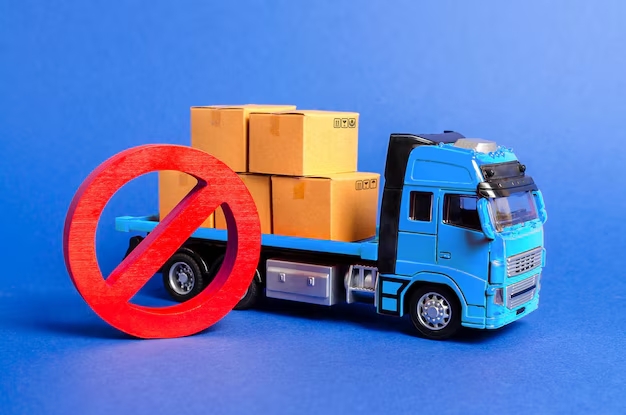Freight Transport in Sanctions Conditions: How to Effectively Adapt Logistics and Risk Management


Let’s not sugarcoat it — navigating freight in today’s sanctions landscape is like playing chess during an earthquake. The rules keep shifting, the pieces move without warning, and what worked last month might now land you in serious legal hot water.
If you’re moving goods across borders (or even just planning to), you’ve probably already had a few “we need to talk” moments with your legal or compliance teams. Or customs. Or worse — with angry clients wondering why their shipment disappeared into a black hole somewhere between point A and point “detained.”
So, how do you stay operational — and sane — when geopolitics mess with your logistics? Let’s break it down. No theory. Just what you actually need to keep moving and avoid unnecessary (and sometimes very expensive) surprises.
First — What are we really dealing with?
Sanctions don’t just mean “you can’t ship to this country.” They can also mean:
- You can’t work with certain companies in otherwise “okay” countries
- Specific goods are restricted (dual-use items, high-tech components, etc.)
- Certain financial transactions are blocked or delayed
- Suddenly, your usual carrier says “no thanks” — and doesn’t tell you why
- A transit route is now off-limits because one of the border countries joined a new sanctions list… yesterday
In short: it’s not just about destinations — it’s about relationships, contracts, routing, documentation, payment, and about twenty other moving parts.
1. Do a hard reset on your supply chain map
Forget what “used to work.” Start by reviewing:
- Where your goods come from
- Where they pass through
- Where they’re going
- And who touches them at every stage
Even a single sanctioned intermediary (a bank, a port operator, a sub-carrier) can throw a wrench into the whole route.
You might need to:
- Change transit hubs
- Reroute through “friendly” jurisdictions
- Switch out suppliers (even if they’re just “supporting” a restricted company)
It’s a hassle. But it's better than a full shipment stuck for weeks because of one overlooked name on a government list.
2. Build a sanctions compliance habit — not a one-time check
This stuff changes. Constantly. And no, a PDF from last year doesn’t count as “up to date.”
Set up a routine:
- Use automated tools that flag restricted entities and export controls
- Subscribe to relevant trade updates (EU, OFAC, UN lists — pick your flavor)
- Make sure your legal team actually understands your routes, not just your headquarters’ address
And train your ops and sales teams. No one should be promising lead times into a country that went red-listed last Tuesday.
3. Work with partners who actually track this stuff
Not all freight forwarders, brokers, or carriers are created equal. Especially in this climate.
Ask them:
- How often do you update your sanctions list?
- Do you provide fallback options if a route suddenly closes?
- What’s your protocol if a shipment gets flagged mid-transit?
If they blink too long or say “we’ll check with the team” — time to find someone else. One missed detail from a partner = your liability.
4. Rethink your contracts — flexibility is key now
Rigid SLAs and tight ETAs are tough when the political map redraws itself every few months.
Start baking in:
- Force majeure clauses that include sanctions
- Alternative routing allowances
- Risk-sharing language for sudden regulatory changes
Also — communicate early with clients. Setting realistic expectations now saves panicked calls (and awkward refunds) later.
5. Have a Plan B. Then a Plan C.
Let’s say your shipment’s moving through Country X. Overnight, X gets sanctioned, or closes its borders in response to someone else’s sanctions. What happens to your cargo? If the answer is “we’ll deal with it when it happens,” you’re asking for trouble.
Build buffers:
- Extra days in the schedule
- Parallel lanes or carriers pre-vetted for compliance
- Alternative ports or customs brokers ready to go
Done last minute? Stressful. Done in advance? A competitive advantage.
Quick real-world example
A client moving dual-use electronics through the EU to Central Asia got stopped cold — not at the border, but by the bank refusing to process payment due to a name that showed up on a new EU list.
Nobody on the logistics side caught it — because payment checks weren’t in the process flow. Now they run a 3-point screening on every shipment: sender, receiver, and all financial parties. Slowed them down by 30 minutes. Saved them weeks of legal damage control.
Logistics in sanctions conditions isn’t impossible — just unforgiving
You don’t need to be paranoid. But you do need to be precise. Every shipment is now a little more like a puzzle — and a little less like a conveyor belt. The trick is to keep moving without getting blindsided. That means updating your tools, training your teams, picking smarter partners, and — sorry — reading the fine print.
Every time. Because in this game, the cost of getting it wrong isn’t just a delay. It’s reputation. It’s money. Sometimes, it’s legal. So stay sharp. Stay informed. And keep a backup plan on standby — just in case.

